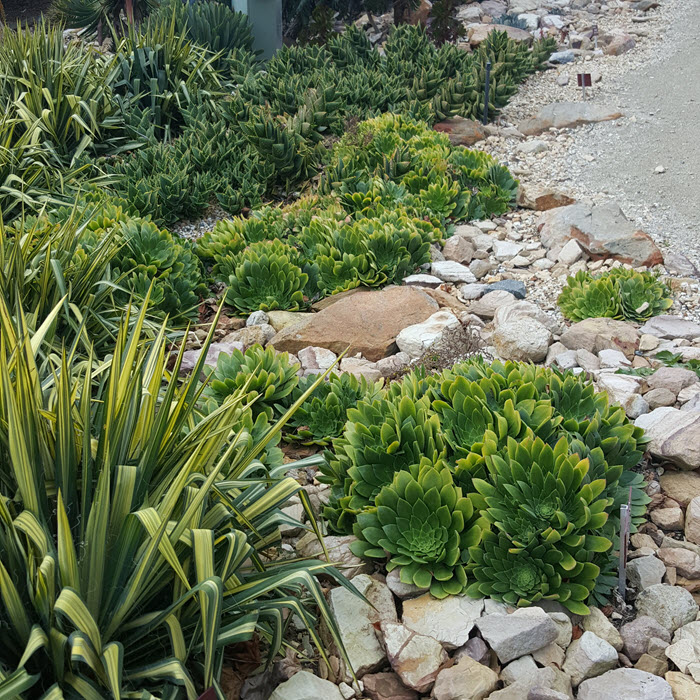The first major cactus and succulent display was established in a specially built cactus display house near the vegetable garden in the early 1980’s. In 2013 the house had exceeded its life and another display area was identified for the collection. The Hobart climate with a dry and temperate summer with winter rains is very suited to the majority of the cactus and succulents remaining in the collection, so an outdoor garden space was landscaped to suit. The current garden provides an opportunity to demonstrate a more water efficient garden landscape, where plants can be used in aesthetically pleasing designs not normally thought of with these types of gardens. Some of the dry land cacti were placed in raised planters with a special soil medium to ensure their continued growing success as large mature specimens. These raised beds provide a wonderful opportunity for people to get up close and personal without getting spiked.
The Cactus Collection displays a range of succulent plants from all over the world from countries ranging from the exotic island of Madagascar to Mexico and the deserts of Namaqualand in southwest Africa.
Within the Collection plants of similar form are grouped together, for example the caudiciform plants can have huge swollen water storage organs. Another interesting group covers the tiny Living Stones which as their name suggests mimic small rocks and pebbles as camouflage against predators. Currently these are displayed in pots within one of the smaller glasshouses near the Education Pod.
Other groups include the Mammillaria spp. which resemble small spiny animals and others such as the more traditional columnar cacti seen in Hollywood westerns.



